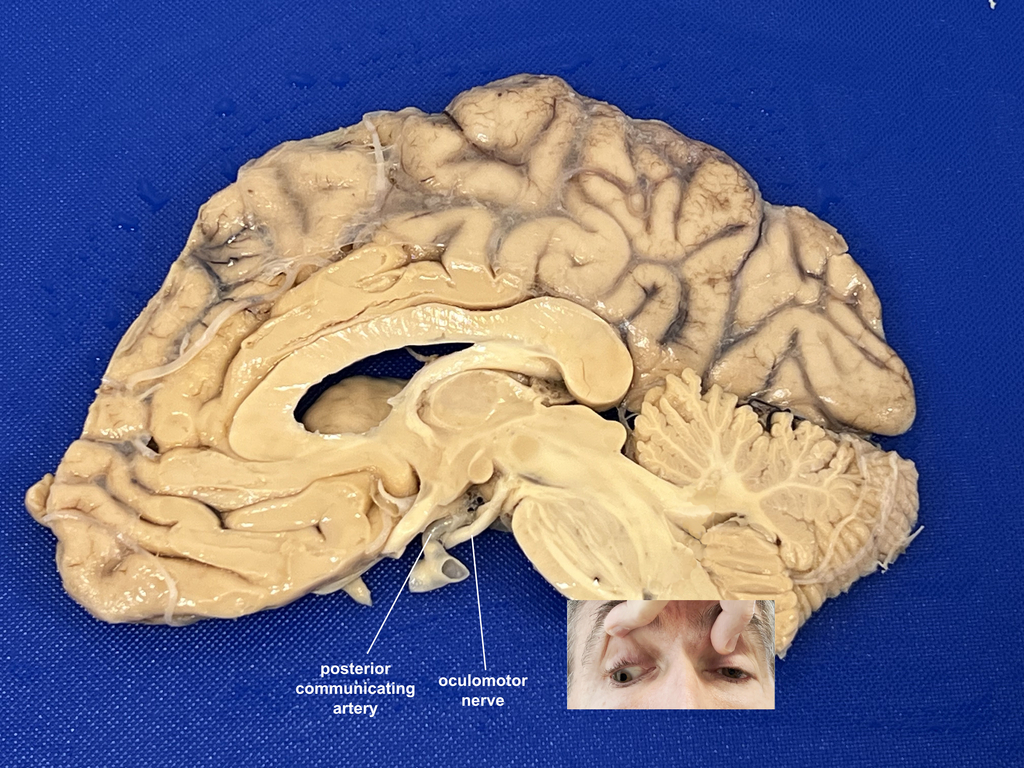
An aneurysm of the posterior communicating artery compresses CN III causing an oculomotor palsy (note the close association of the PCom artery and the oculomotor nerve.) This can begin with just parasympathetic injury causing a "blown" or dilated pupil which can be the red flag to check for such an aneurysm so it can be treated before rupturing causing what type of intracranial bleed? Recall that the arteries are all with the CSF, beneath the arachnoid mater. Hence, it would be a subarachnoid bleed. To appreciate these layers and the relationship between the posterior communicating artery and the oculomotor nerve, watch the brain removal video.As for this case, remember that an oculomotor palsy causes first a blown pupil, then a "down and out" appearance. Return to the case to try again.
